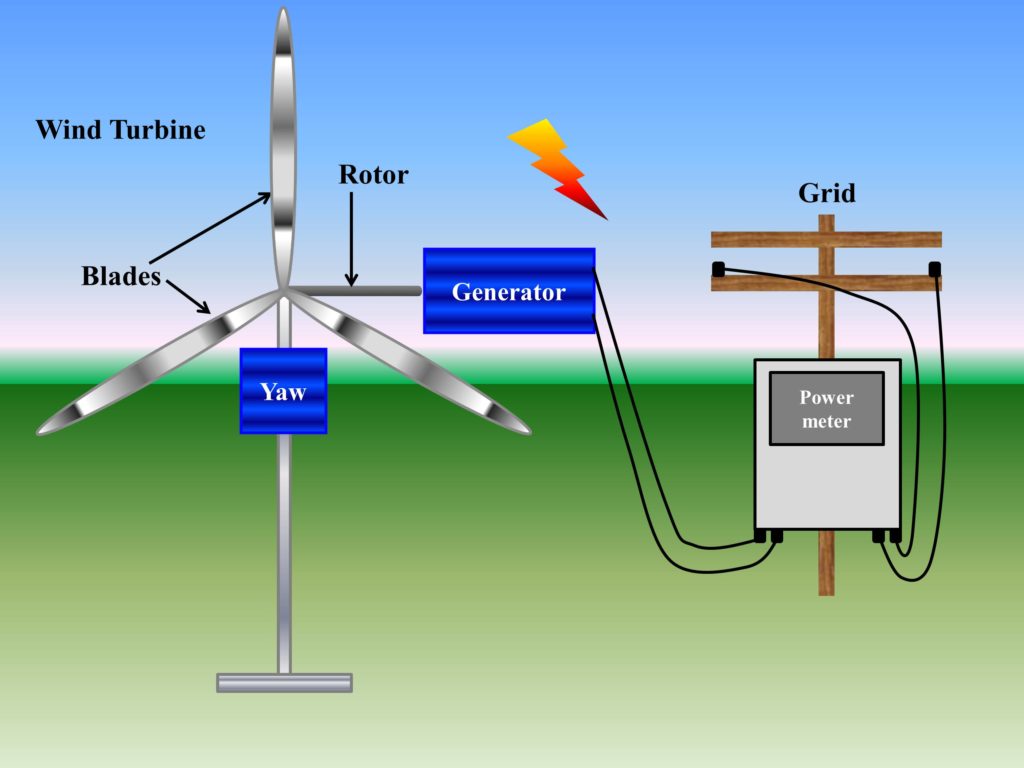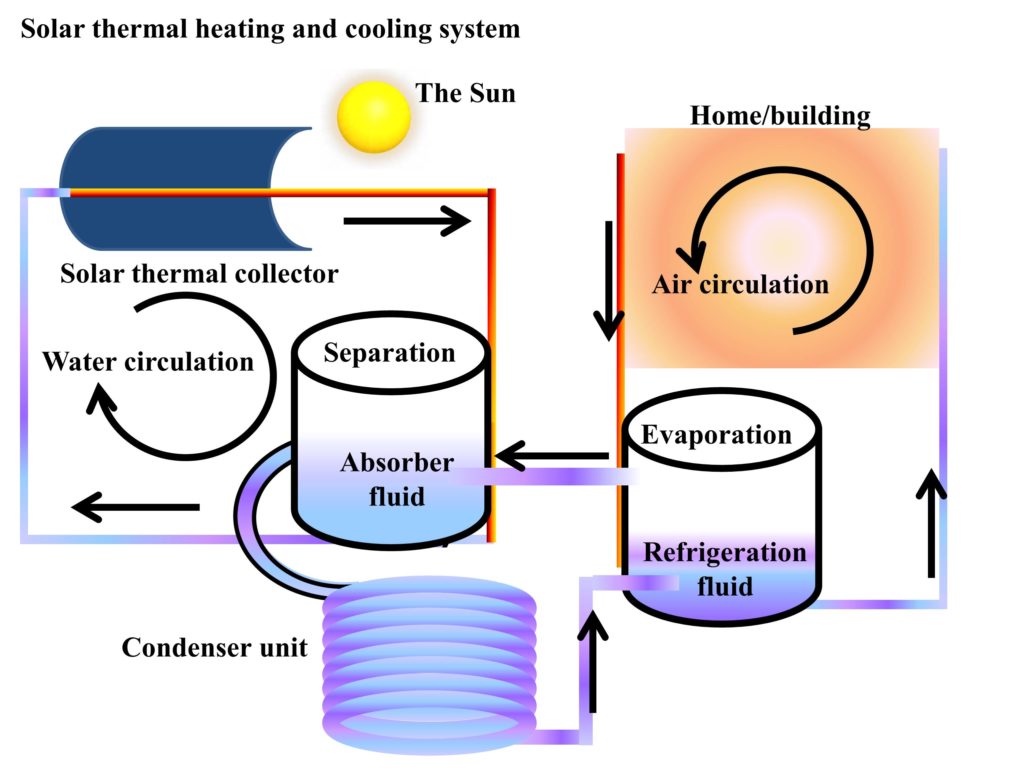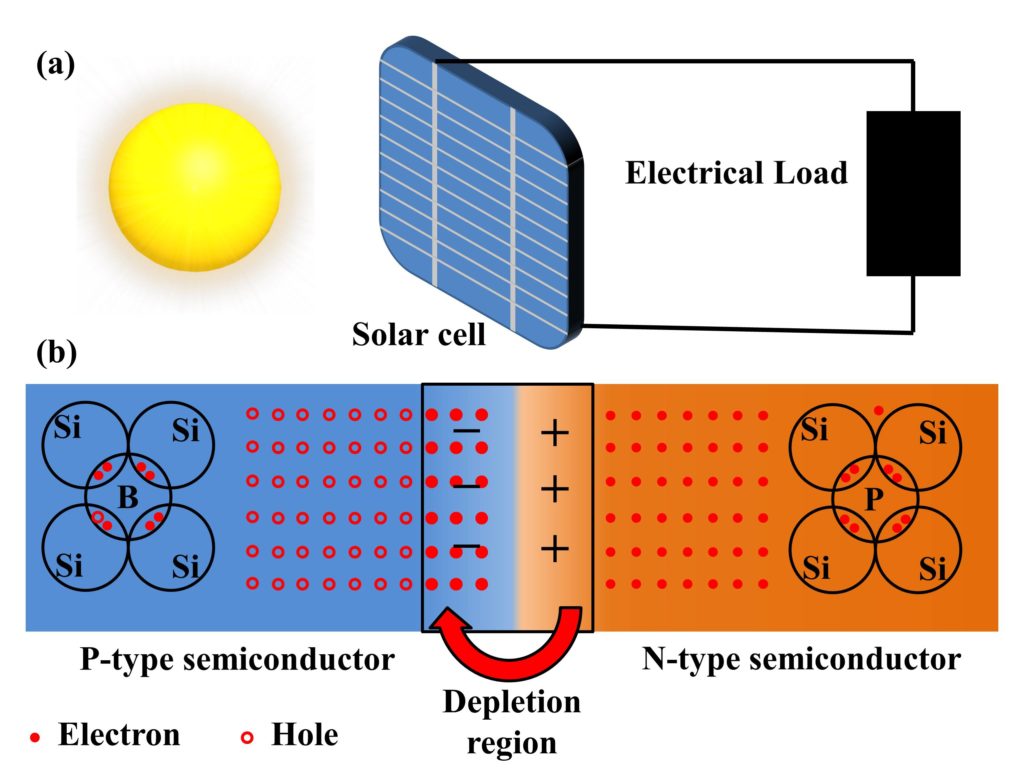What is a windmill?
A windmill is a device that harnesses wind energy by utilizing the kinetic energy of the wind and converts this energy into rotational kinetic energy, which is then used to grind grain and other crops. Although windmills can also be used for the generation of electricity, they are mostly used for OTHER purposes. The design and material requirements of the windmills are simple and therefore it is cost-effective and easy to maintain. This can be better understood from the fact that windmills have been around since the 6th-9th century (Dark Ages), and if and they were complex, or required stringent conditions, or needed electricity for grinding, we might not be able to build them.
The major requirement of a windmill is the availability of the wind, the sails of the windmill, and the internal structure used to grind the grain. A visual depiction of a simplistic version of the windmill is shown in Fig. 1.

Depending on the axis of rotation, the windmills are also termed horizontal windmills (HW) and vertical windmills (VW). Vertical windmills are a more common type of windmills, some of which are still functional today.
Calculations and technical aspect of the wind energy
The calculations of power attained in the wind can be calculated exactly as for the case of wind turbines, explained in the previous section. The maximum power that can be harnessed from wind is given by the following Eq. 1.
Where P is the power that can be harnessed by the wind system (either wind turbine or windmill). The factor of 16/27 corresponds to power coefficient, A is the area swept by the blades/sails, that is given by πr2. The term ρ is the density of the air in kg/m3, Ccf is the capacity factor of the wind system, and ηgear and ηgen are the efficiencies of the gear system and the generator, respectively. For the case of windmills, the efficiency factor of the gear, ηgear, is ignored as shown in Eq. 2. Therefore, higher efficiency can be translated into windmills.
In-depth analysis of wind energy reveals that in technicality, the wind is a phenomenon that also occurs due to the solar irradiation heating the part of landmass. The wind forms a convection current, in which, the air in warmer areas gets heated and rises up, and cold air moves towards that area to take the place of the warmer wind. This phenomenon happens due to the fact that when a liquid or a gas heats up, it expands, and expansion causes that fluid to have a lower density. The cooler fluid, on the other hand, has a higher density than warmer fluid, therefore, cooler fluid takes the place of the warmer fluid. This is a natural process of cooling and it happens indefinitely till the temperature of both areas reaches an equilibrium.
Convection current for wind changes its direction corresponding to the time of the day. In the daytime, the land heats up faster than the seas, which causes cooler winds to move from the sea to the land. At nights, the land cools down faster than the sea, and therefore, cooler wind from land blows towards the sea.
Working of a windmill and its components
- Windmill structure: This is a structure that is used to support the sails of the windmill and house all the rest of the components of the windmill inside it. It houses rotor, gear system, and stones for grinding purposes as shown in Fig. 1.
- Sails of the winmill: The kinetic energy of the wind is captured through the sails of the windmill. These sails are designed to capture the highest amount of wind energy and convert into mechanical power to rotate the rotor.
- Rotor or shaft: The rotor/shaft of a windmill is a cylindrical solid element which is used to deliver rotational power from sails to the gear.
- Gear: The gear system of the windmill is used to change the rotational velocity of the grinding elements. It also changes the axis of rotational power from the rotor.
- Grinding stones: The grinding stones are physically attched to the gear system and they are used for grinding purposes.
Comparison of windmill vs wind turbine
From the design and operation, the windmill and wind turbines are almost similar. This begs the question: Why are they defined individually or why do they have different operations?
Similarities
- Both windmills and wind turbines capture wind energy or the flow of wind.
- They both employ blades or sails to capture the wind power. The rotor/shaft system of windmills and wind turbines is also similar.
- They both can be made to work in place of each other, but with lower efficiency.
- The power generated from both of these systems is considered as renewable.
Differences
- The blades and sails of wind turbine and windmills, respectively, although serve the same purpose of capturing the power in the flow of wind, the design is different. The blades of wind turbine are designed to provide greater rotational velocity and they are usually 3 in number, therefore. On the other hand, in windmills, the sails are made to have a larger surface area than blades, and the sails are usually made to be 4 in number.
- The windmills are used for grinding purposes rather than generation of electricity, which is the case for wind turbines.
- The efficiency of windmills can be slightly higher than wind turbines, since the windmills do not have a generator component in them that also lower the efficiency of the system.
Applications of windmills
Grinding
The major application of windmills is still the grinding of grain and other crops.
Pumping water
Another major application of windmills is to pump water from wells. The system of pumping water can be made by attaching a motor to the rotor/shaft of the windmill. This motor can then pump the water from an underground well to the surface. The earliest examples of such water pumping systems can be found in lost civilizations, dating as old as the 9th century, in Asian countries.
Further readings
If you like this blog, you can continue to read similar blogs corresponding to a similar topic.




